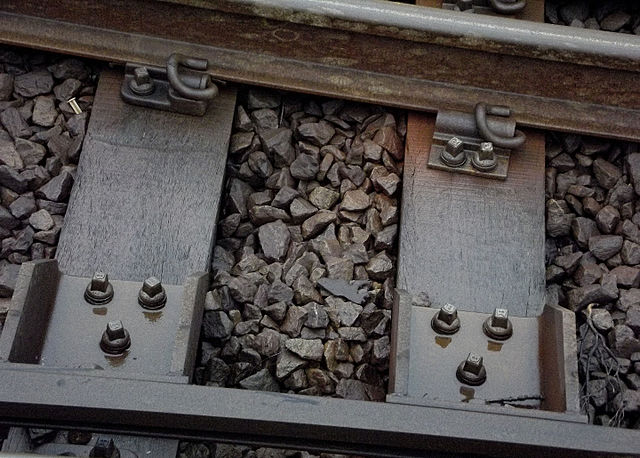Track geometry is concerned with the properties and relations of points, lines, curves, and surfaces in the three-dimensional positioning of railroad track. The term is also applied to measurements used in design, construction and maintenance of track. Track geometry involves standards, speed limits and other regulations in the areas of track gauge, alignment, elevation, curvature and track surface. Standards are usually separately expressed for horizontal and vertical layouts although track geometry is three-dimensional.
Curve with superelevation of tracks on the Keystone Corridor near Rosemont, Pennsylvania
Railroad track spirit level in place indicating 5 in (130 mm) of superelevation between the inside and outside rails of a curve along the Keystone Corridor near Narberth, Pennsylvania
A railway track or railroad track, also known as a train track or permanent way, is the structure on a railway or railroad consisting of the rails, fasteners, railroad ties and ballast, plus the underlying subgrade. It enables trains to move by providing a dependable surface for their wheels to roll upon. Early tracks were constructed with wooden or cast iron rails, and wooden or stone sleepers; since the 1870s, rails have almost universally been made from steel.
New railway concrete sleeper
Traditional railway track showing ballast, part of sleeper and fixing mechanisms
Track of Singapore LRT
Ballastless high-speed track in China






